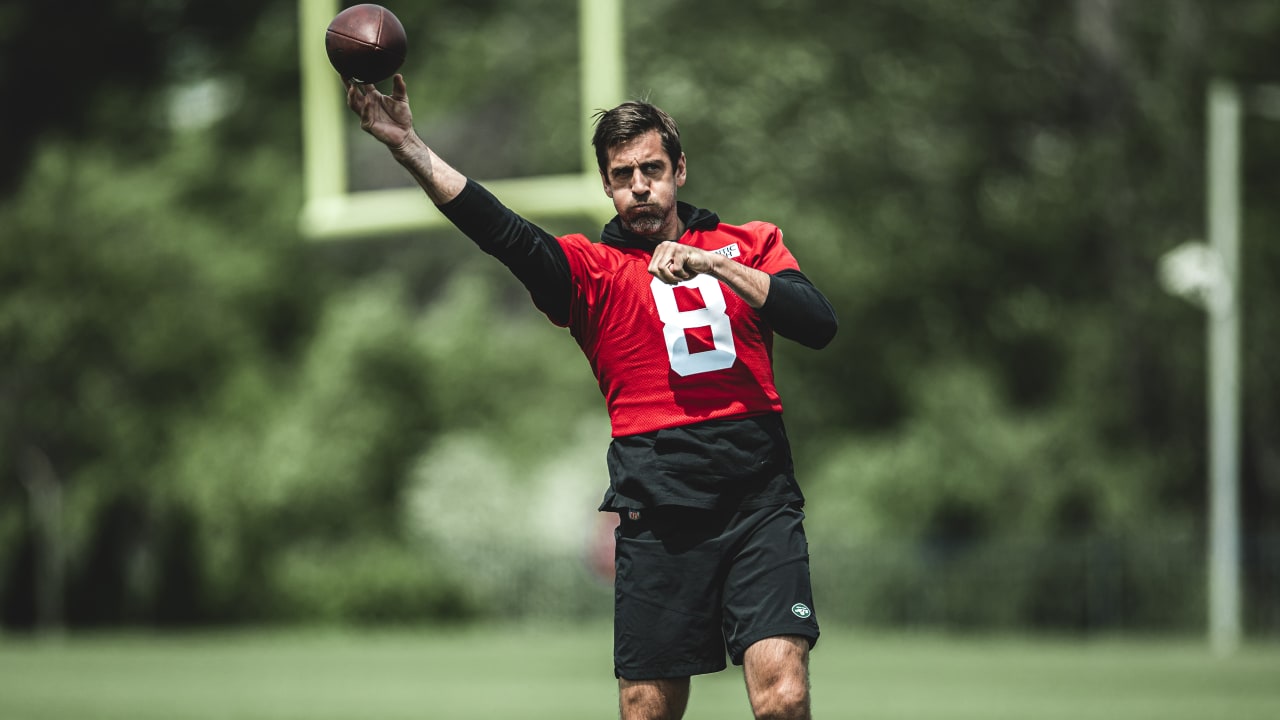Unpacking The Impact Of An Aaron Rupar Tweet
In the fast-paced world of digital journalism, few names resonate as strongly as Aaron Rupar, a journalist whose concise yet impactful video clips and direct quotes shared on social media have carved out a unique niche. An Aaron Rupar tweet often becomes an immediate focal point of online political discourse, sparking widespread discussion, debate, and sometimes, controversy. His distinctive approach to capturing and disseminating crucial moments from political speeches, press conferences, and public appearances has made him an indispensable figure for many seeking real-time, unfiltered insights into the political landscape.
Rupar's methodology, primarily centered on platforms like X (formerly Twitter), bypasses traditional editorial gatekeepers, delivering raw, unedited snippets directly to a vast audience. This direct pipeline to public discourse has not only redefined how political information is consumed but also underscored the immense power of individual journalists in shaping narratives. Understanding the phenomenon of an Aaron Rupar tweet requires a deep dive into his journalistic philosophy, the technological landscape he navigates, and the broader implications for media consumption and civic engagement in the 21st century.
Table of Contents
- Who is Aaron Rupar? A Brief Biography
- The Unique Style of an Aaron Rupar Tweet
- The Power and Reach of Social Media Journalism
- Navigating the Complexities: Aaron Rupar and Media Criticism
- The Role of an Aaron Rupar Tweet in Political Discourse
- Beyond the Headlines: The Broader Context of "Aaron" in Public Life
- The Future of Digital Reporting and the "Aaron Rupar Tweet" Model
- Stargazing for Truth: Observing Political Events with Clarity
Who is Aaron Rupar? A Brief Biography
Aaron Rupar is an American journalist best known for his work in digital media, particularly his prolific presence on social media platforms where he shares short video clips and direct quotes from political figures and events. Before gaining widespread recognition for his social media activity, Rupar worked as a staff writer for various publications, including ThinkProgress and Vox. His background in traditional journalism provided him with a strong foundation in reporting and analysis, which he then adapted to the unique demands of real-time digital dissemination.
Rupar's rise to prominence coincided with the increasing importance of social media as a primary source of news and political commentary. His ability to quickly identify and extract key moments from lengthy speeches or press conferences, often highlighting gaffes, controversial statements, or revealing exchanges, made his content highly shareable and influential. This approach has positioned him as a critical observer of political communication, often providing raw material that mainstream media outlets later analyze and discuss. His work emphasizes the importance of direct observation and unedited presentation, allowing viewers to draw their own conclusions from the primary source material he provides.
Personal Data and Background
While Aaron Rupar maintains a professional focus on his journalistic output, here is a summary of publicly available information about his background:
| Category | Detail |
|---|---|
| Name | Aaron Rupar |
| Nationality | American |
| Profession | Journalist, Writer, Digital Media Commentator |
| Known For | Sharing short video clips and direct quotes of political figures on social media (primarily X/Twitter) |
| Previous Affiliations | ThinkProgress, Vox |
| Current Status | Independent journalist/commentator |
| Focus Area | U.S. Politics, Media Criticism |
The Unique Style of an Aaron Rupar Tweet
What sets an Aaron Rupar tweet apart is its minimalist yet potent nature. Unlike traditional news reports that offer extensive context and analysis, Rupar's tweets often consist of a short video clip (sometimes just a few seconds long) accompanied by a concise, often direct, quote from the speaker. His genius lies in his ability to identify and isolate moments that are particularly revealing, contradictory, or indicative of a larger trend. He acts as a digital curator, sifting through hours of political rhetoric to present the most impactful snippets.
This approach serves multiple purposes. Firstly, it provides immediate, unvarnished access to primary source material, allowing viewers to see and hear exactly what was said without journalistic interpretation. Secondly, it caters to the short attention spans prevalent in the digital age, delivering information in easily digestible formats. Thirdly, it often highlights discrepancies or moments of candor that might otherwise be overlooked in a longer broadcast. Just as a detailed interactive night sky map helps observers pinpoint celestial objects, Rupar's concise tweets aim to pinpoint critical, often fleeting, moments in political discourse. He strives to present a realistic star map of political events, just like what you see with the naked eye, binoculars or a telescope, cutting through the noise to show what's truly visible.
His tweets are not merely re-shares; they are acts of journalistic curation, framed by a keen eye for what matters in the broader political narrative. This style has made him a go-to source for many, even as it has drawn criticism from those who argue that decontextualized clips can be misleading. However, Rupar consistently defends his method by asserting that he presents the raw material, and it is up to the audience to engage with it critically.
The Power and Reach of Social Media Journalism
The advent of social media has fundamentally altered the landscape of journalism, transforming how news is reported, consumed, and debated. An Aaron Rupar tweet exemplifies this shift, demonstrating how individual journalists can wield significant influence outside traditional media structures. Platforms like X provide an unparalleled reach, allowing content to go viral within minutes, crossing geographical and demographic boundaries. This speed and breadth of dissemination mean that a single tweet can set the agenda for discussions across various media platforms, from cable news to online forums.
In an era where information travels at light speed, much like a comet streaking across the night sky, an Aaron Rupar tweet can instantly illuminate a crucial event, making it visible to millions. This rapid spread of information has both benefits and drawbacks. On one hand, it democratizes access to information, bypassing traditional gatekeepers and allowing for diverse perspectives to emerge. On the other hand, it raises concerns about accuracy, context, and the potential for misinformation to proliferate rapidly. Rupar's work, by focusing on primary source video, attempts to mitigate the latter by providing verifiable content, even if the surrounding context is left to the viewer to ascertain. His success underscores the public's appetite for direct, unmediated access to political events, highlighting a growing distrust in filtered or heavily analyzed news.
Navigating the Complexities: Aaron Rupar and Media Criticism
While an Aaron Rupar tweet is often lauded for its directness and immediacy, it has also been the subject of considerable media criticism. The primary critique revolves around the issue of decontextualization. Critics argue that presenting short, isolated clips, even if accurate, can remove statements from their broader context, potentially altering their meaning or intent. This concern is particularly acute in political reporting, where nuances of language and situation can be crucial.
Rupar, for his part, often counters these criticisms by emphasizing that he provides the raw footage, and that the full context is readily available to those who seek it. He views his role as highlighting moments that are significant regardless of their surrounding context, or that reveal something fundamental about the speaker's message or character. His defenders argue that his work serves as a vital counter-balance to carefully curated political messaging, forcing accountability by showcasing unfiltered moments. This ongoing debate highlights the evolving ethical considerations in digital journalism, particularly concerning the balance between immediacy, context, and journalistic responsibility. As a figure operating at the forefront of this evolution, Rupar's work continually sparks discussions about what constitutes fair and accurate reporting in the age of social media.
The Role of an Aaron Rupar Tweet in Political Discourse
The impact of an Aaron Rupar tweet on political discourse cannot be overstated. His clips frequently go viral, becoming talking points on cable news, fodder for late-night comedy, and subjects of intense debate across social media. By bringing specific moments to widespread attention, Rupar effectively influences the daily news cycle and shapes public perception of political figures and events. His work often serves as a catalyst, prompting mainstream media to cover or re-examine events that might otherwise have received less scrutiny.
For citizens, Rupar's tweets offer a direct window into political realities, helping them to form opinions based on primary evidence. In an environment where political communication is often carefully crafted and controlled, his unedited clips provide a refreshing, albeit sometimes jarring, dose of reality. This direct engagement with political content can empower individuals to be more informed participants in democratic processes, enabling them to assess politicians' statements and actions with greater clarity. This direct access to information, which can influence voting decisions, policy support, and public discourse, directly ties into the principles of YMYL (Your Money or Your Life) by fostering a more informed and engaged citizenry, ultimately impacting societal well-being and governance.
Beyond the Headlines: The Broader Context of "Aaron" in Public Life
The name Aaron, while perhaps most commonly associated today with figures like the legendary NFL quarterback Aaron Rodgers, or even the foundational biblical figure Aaron who, with his brother Moses, led the Israelites out of Egypt and was the traditional founder and head of the Israelite priesthood, carries diverse connotations. Aaron's account is integral to the narrative of the Israelites' exodus from Egypt and their subsequent journey to the promised land, born into the tribe of Levi and later becoming the first High Priest. Similarly, the name graces commercial ventures like Aaron's, which offers furniture, electronics, appliances, and computers with affordable payments, helping people decorate their homes with a new look. Yet, in the digital age, a new 'Aaron' has emerged as a significant figure: Aaron Rupar, whose every tweet becomes a focal point.
This commonality of the name "Aaron" across various spheres of public life—from ancient religious texts and modern sports arenas to consumer retail and, now, digital journalism—highlights how individuals bearing the same name can carve out vastly different, yet equally impactful, legacies. While the biblical Aaron was known for his role in spiritual leadership and the Aaronic priesthood, and Aaron Rodgers for his athletic prowess and fun in the sun, Aaron Rupar has distinguished himself through his unique contribution to the dissemination of political information in the digital age. His influence, though distinct from these other Aarons, is undeniably significant in shaping contemporary public understanding and political discourse.
The Future of Digital Reporting and the "Aaron Rupar Tweet" Model
The "Aaron Rupar tweet" model represents a fascinating case study for the future of journalism. As traditional media outlets grapple with declining trust and evolving consumption habits, the direct-to-consumer approach championed by Rupar offers a glimpse into potential pathways for independent journalism. His success demonstrates that there is a significant audience hungry for unmediated content, delivered quickly and efficiently.
This model challenges conventional notions of journalistic authority and expertise, placing a greater emphasis on raw data and individual interpretation. It also underscores the importance of technological fluency for journalists, as the ability to quickly capture, edit, and disseminate video has become as crucial as traditional reporting skills. The continued evolution of social media platforms and video technologies will likely further empower journalists operating in this space, potentially leading to new forms of digital reporting that prioritize immediacy and direct access.
Adapting to the Digital Landscape
For journalists and media organizations, adapting to the digital landscape means more than just having a social media presence; it means understanding the nuances of how information spreads and is consumed on these platforms. The "Aaron Rupar tweet" strategy exemplifies a deep understanding of platform dynamics, leveraging video's power and the viral nature of concise content. Future journalistic endeavors will increasingly need to integrate such real-time, direct dissemination methods, while also developing robust strategies for fact-checking and providing context in a fragmented information environment.
Ethical Considerations in Real-Time Reporting
The speed of real-time reporting, as epitomized by an Aaron Rupar tweet, brings with it significant ethical considerations. The pressure to be first can sometimes compromise accuracy or lead to premature conclusions. Journalists operating in this space must balance the imperative for speed with the responsibility to ensure the integrity of the information they share. This involves clear labeling of content, transparent sourcing, and a willingness to correct errors swiftly. The ethical framework for digital, real-time journalism is still evolving, and figures like Rupar are central to shaping its contours.
Stargazing for Truth: Observing Political Events with Clarity
Just as an interactive night sky map allows us to explore the wonders of the night sky, identifying which planets, stars, constellations, and comets are visible tonight, Aaron Rupar's work aims to provide a clear map of complex political events. He helps us discover celestial objects visible tonight from our current location, metaphorically speaking, by highlighting key moments and statements that might otherwise be missed amidst the vastness of daily news. Our guide automatically shows planets, stars, nebulae, and spacecraft flyovers you can see right now, and similarly, Rupar's feed often surfaces crucial political "flyovers" that demand attention.
Like using Stellarium web, a planetarium running in your web browser, to see a realistic star map, just like what you see with the naked eye, binoculars or a telescope, Rupar strives to present unvarnished reality, allowing viewers to see events as they truly unfold. His tweets, in a way, become a custom map of the night sky for your location, helping you learn what key statements are visible, and locate the brightest stars of political discourse. Explore the wonders of the night sky with NASA's interactive skymap, offering celestial insights and breathtaking views of our universe; similarly, Rupar offers a unique lens through which to explore the sometimes bewildering universe of politics. Find out what's up in your night sky during June 2025 and how to see it in a space.com stargazing guide; Rupar provides a similar guide for understanding the political climate, showing what's up in tonight's political sky. City lights permitting, it's there, night after night, this river of ancient light – and in the same vein, Rupar consistently delivers moments of illuminating truth, despite the 'city lights' of political spin. Try this exquisite stargazing tool, take an effortless journey through thousands of stars, planets and constellations; Rupar's feed offers a similarly effortless journey through the key moments of political discourse.
The Importance of Context in a Tweet-Driven World
While Rupar provides the raw material, the onus remains on the consumer to seek broader context. Just as downloading a sky map for the current month helps you understand the celestial movements, engaging with diverse news sources and conducting independent research is crucial for a complete understanding of political events highlighted by a tweet. A single clip, no matter how revealing, is rarely the entire story. The true power of Rupar's work lies in its ability to spark curiosity and encourage deeper investigation, much like seeing a bright planet in the night sky might inspire someone to learn more about astronomy.
Empowering Informed Citizenship
Ultimately, the phenomenon of an Aaron Rupar tweet contributes to empowering informed citizenship. By making political discourse more accessible and transparent, he enables individuals to engage more directly with the actions and words of their elected officials. This direct access fosters a more critical and engaged populace, essential for a healthy democracy. His work, therefore, is not just about reporting; it's about providing the tools for citizens to become their own observers of the political sky, discerning the patterns and identifying the significant celestial objects that shape their world.
Conclusion
The Aaron Rupar tweet has undeniably carved a significant niche in modern journalism, demonstrating the profound impact an individual journalist can have in the digital age. By consistently delivering concise, unedited video clips of political figures, Rupar has become a vital source for many seeking immediate and unfiltered insights into political discourse. His unique style has not only influenced how news is consumed but also sparked important conversations about journalistic ethics, context, and the evolving role of social media in shaping public opinion. While the name "Aaron" carries diverse historical and contemporary associations, Aaron Rupar has distinguished himself by harnessing the power of digital platforms to illuminate critical moments in our political landscape.
As the media environment continues to evolve, the "Aaron Rupar tweet" model offers valuable lessons for both journalists and news consumers. It underscores the public's desire for direct access to information and highlights the ongoing challenge of balancing immediacy with comprehensive context. We encourage you to explore Aaron Rupar's work, engage critically with the content he provides, and use it as a starting point for your own deeper dives into the complexities of political events. What are your thoughts on the impact of real-time social media journalism? Share your perspectives in the comments below, or explore our other articles on the future of media and civic engagement.

Lots of Little Details Remind Jets QB Aaron Rodgers 'I'm in the Right

Aaron Rodgers

پیشنهاد شنیدنی: Endless Song پایانی شیرین از AaRON